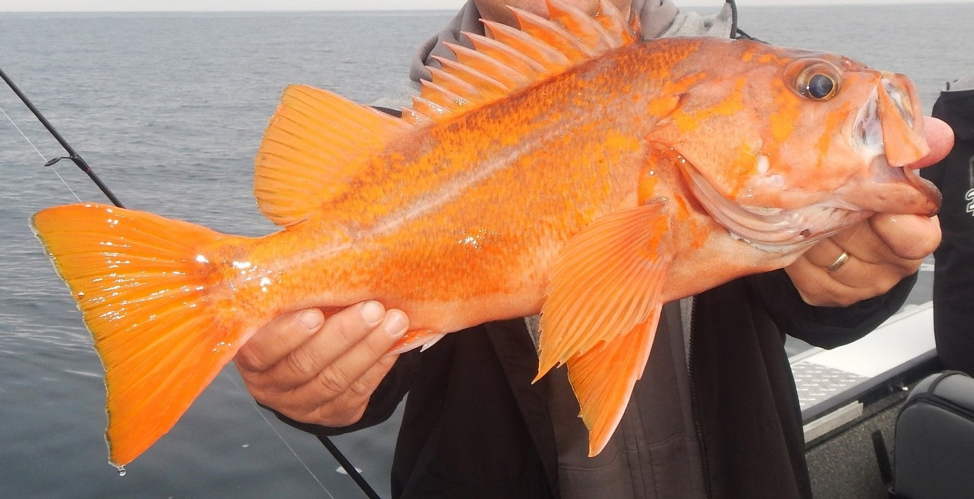Case Study: Cowcod Conservation Areas
Cowcod rockfish are found at depths of 70-350 meters, typically in the Southern California Bight where adult habitat is most common. The CCAs are depth-based closures, aimed to prevent bottom trawling and fishing of Cowcod. They span from Pt. Conception to the Mexico Border, and have been in place for over 15 years. Because they have been in place for so long, they have yielded great success.
While commercial fishermen argued that the closures were crushing their livelihoods, environmental groups pushed for more conservative measures. But in 2019 the groups came together and made changes to the RCA and CCAs, based on new scientific evidence that shows that the Cowcod and Yellow-eye populations are recovering faster than anticipated. Though Cowcod are still prohibited to take, the depth allowed for other groundfish fishing has increased to 40 fathoms (240 feet) in Cowcod Conservation Areas.
Case Study: Canary Rockfish
Canary rockfish stocks are the most recently rebuilt. Due to overfishing, their stocks were at an all-time low in 2000. If the trend would have continued, they might have disappeared from the West Coast altogether. To prevent that from happening, a multitude of conservation efforts were established, including area closures, which prohibited the removal of all groundfish within designated boundaries, and careful monitoring of times and seasons fishermen were able to go out and fish. Area closures, mainly RCAs, aided in the stock’s recovery by prohibiting the take of all rockfish and reducing fishing pressures.
Established in 2002 to minimize catch of overfished species such as Darkblotched and Canary Rockfish, the RCAs closed off a coast-wide ribbon of ocean between depths of 100 and 150 fathoms (183–274 m). The boundaries were strategically set so that overfished species aren’t expected to be in the areas where and when fishing is allowed, helping protect those species. Although appropriate for its time, the RCA was a tough regulatory blow to the fishing community. The closure successfully protected the rocky underwater habitat of some overfished species, but to the dismay of many fishermen, it also restricted fishing in some sandy-bottom areas and limited their ability to catch other target species.
However, through these combined conservation efforts, canary numbers were able to recover and grow, and the fishery was declared rebuilt in 2015, fifteen years ahead of schedule. This was evident as the catch quota for the commercial fishery increased from 1,800 lbs to 34,000 lbs. As a result, recreational fishermen have been provided with more fishing opportunities as they can now fish deeper waters in search of canaries.



